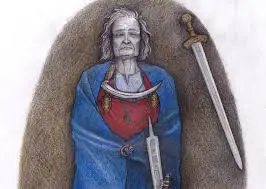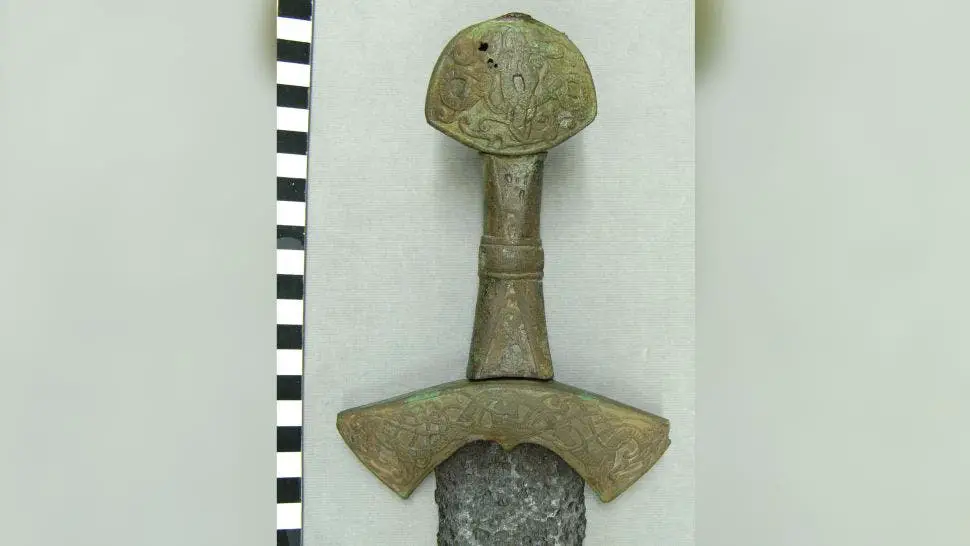A recent study suggests that a warrior buried around 1,000 years ago may have been non-binary.
In 1968, archaeologists uncovered the grave of a warrior in Finland.
Based on the knowledge of medieval burial practices at the time, researchers initially believed the grave belonged to a woman.
The individual was buried wearing a feminine dress and jewelry, items commonly associated with a woman’s burial in that era.
However, scientists were puzzled by the presence of two swords among the grave goods.
Instead of assuming the site belonged to a ‘warrior woman,’ this discovery led researchers to conclude that the grave might actually hold the remains of two individuals.
Now, however, a fascinating new development has emerged in the study—and it could change our entire perspective…

According to a peer-reviewed study in the European Journal of Archeology, a DNA analysis suggests the remains belonged to a high-status non-binary person.
“Non-binary people feel their gender identity cannot be defined within the margins of the gender binary,” the LGBT Foundation explains.
“Instead, they understand their gender in a way that goes beyond simply identifying as either a man or woman.”
The study’s lead author, Ulla Moilanen, explained to CNN via email, “This burial features an unusual and striking combination of feminine and masculine symbolism, which may suggest that the individual was not strictly aligned with either gender but rather something unique.”
So, let’s dive deeper into this fascinating ‘elaborate burial’…

In their study, the researchers noted that the grave contained traces of rabbit hair and bird feathers, along with brooches—items commonly associated with female burials from that era.
However, as the team investigated the remains further, they were puzzled to find that the sword placed atop the body seemed to have never been used.
While this might not initially seem unusual, it’s actually atypical for this period, prompting the researchers to characterize it as having ‘less violent and genderless’ symbolism.
To further support their theory, the team conducted an analysis on the only usable fragment of the femur found in the grave.
The analysis revealed evidence of an XXY karyotype, which is now recognized as Klinefelter syndrome.

According to the Cleveland Clinic, “Klinefelter syndrome is a common genetic condition in which individuals assigned male at birth (AMAB) have an additional X chromosome.”
The Mayo Clinic reports that Klinefelter syndrome can lead to reduced muscle mass, decreased facial and body hair, and enlarged breast tissue.
Symptoms are often subtle, and some individuals may go through life without ever realizing they have this condition.
The researchers of the study have emphasized that the DNA results were derived from a small sample, necessitating some reliance on modeling.
Moilanen concludes that the individual “might not have been strictly categorized as either female or male in the early medieval community. The extensive array of objects buried with them serves as evidence that this person was not only accepted but also valued and respected.”
This study challenges the notion of an ‘ultramasculine environment of early medieval Scandinavia.’ Archaeologists and historians have described the findings as ‘exciting,’ according to The Guardian.





